Laboratories jointly run with companies
In the same way as other joint research structures like CNRS/Companies Joint Research Units (UMR) or International Research Laboratories (IRL), associated research laboratories take traditional partnerships further in the form of collaboration contracts. They go beyond classic short-term research projects with objectives that are regularly updated through ad hoc governance. Associated research laboratories operate on the basis of collaboration contracts that provide a framework to structure projects with high scientific and industrial stakes. These generally involve one or more research team(s) and an industrial concern working together on a shared medium- or long-term research programme.
Arès, Machine Learning And Computer Vision For Intelligent Robots
ANR LabCom. Partners: LIRIS / Siléane
The increasing automation of dangerous, tedious and repetitive tasks is a symbol of technological progress and essential for effective productivity levels and competitiveness. The sustainability of an industrial site partly depends on its flexibility and the scalability of its production tools in a globalized market context with strong competition and rapidly changing requirements.
The objective of this Labcom project is to develop new machine learning and computer vision methods to create flexible, adaptable, autonomous robotized tools able to guarantee high productivity and manage ultra-flexibility as required in many industrial applications.
The aim is to contribute to improving the performance of the task of sorting and placing products in a context of high diversity and high flexibility. This task is often very tedious and repetitive and is found across all industrial manufacturing processes (foundry, chassis, machining, stamping, sheet metal, assembly)
To achieve these aims, the Labcom ARES project combines two complementary partners who will pool their research, innovation and development capacities and make their already strong cooperation on R&D official:
- A laboratory: Computer Science Laboratory for Image Processing and Information Systems (LIRIS - CNRS/ Lyon INSA /Université de Lyon/École Centrale de Lyon) which will develop new methods and techniques of machine learning and computer vision to serve adaptable and flexible robotics.
- An SME: Siléane, specialized in robotics, which will design and produce autonomous picking/kitting robots
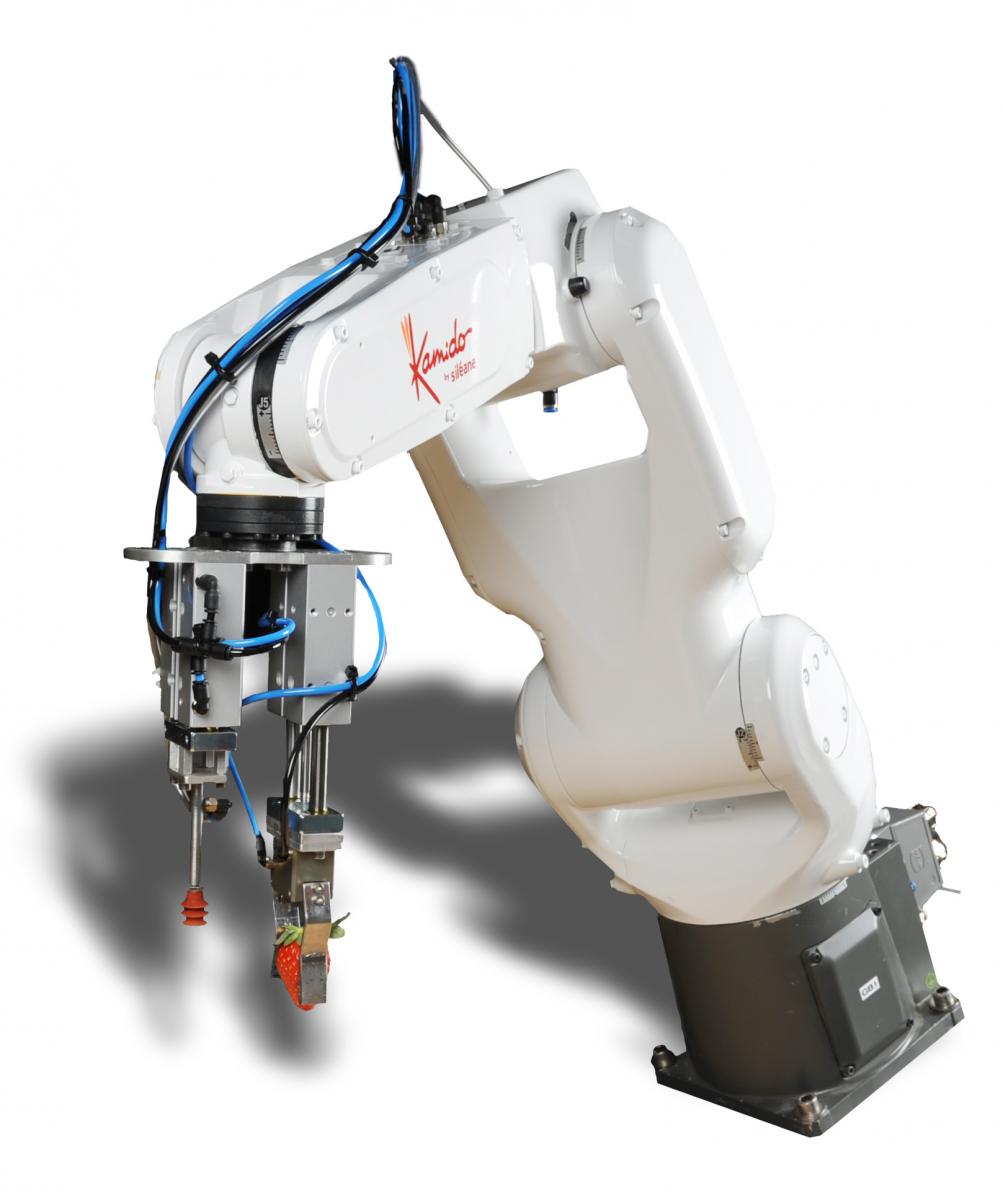
Behaviors.ai, an artificial intelligence engine which enhances the verbal and nonverbal interactions of
ANR LabCom. Partners: LIRIS / HOOMANO
The mission of the joint laboratory Behaviors.ai (Behaviors.ai is an Engine enHancing verbAl and nonVerbal InteractiOns of RobotS, based on Artificial Intelligence) is to develop an intelligent interaction engine capable of generating human-robot interactions and making them more empathic, intuitive and natural.
This project brings together artificial intelligence researchers from the Computer Science Laboratory for Image Processing and Information Systems (LIRIS - CNRS/ Lyon INSA /Université de Lyon/École Centrale de Lyon) and HOOMANO, a start-up company which specializes in developing software for social robots. The objective of Behaviors.ai is to succeed in transferring fundamental research results, notably in developmental learning, to the business-to-business markets HOOMANO works in.
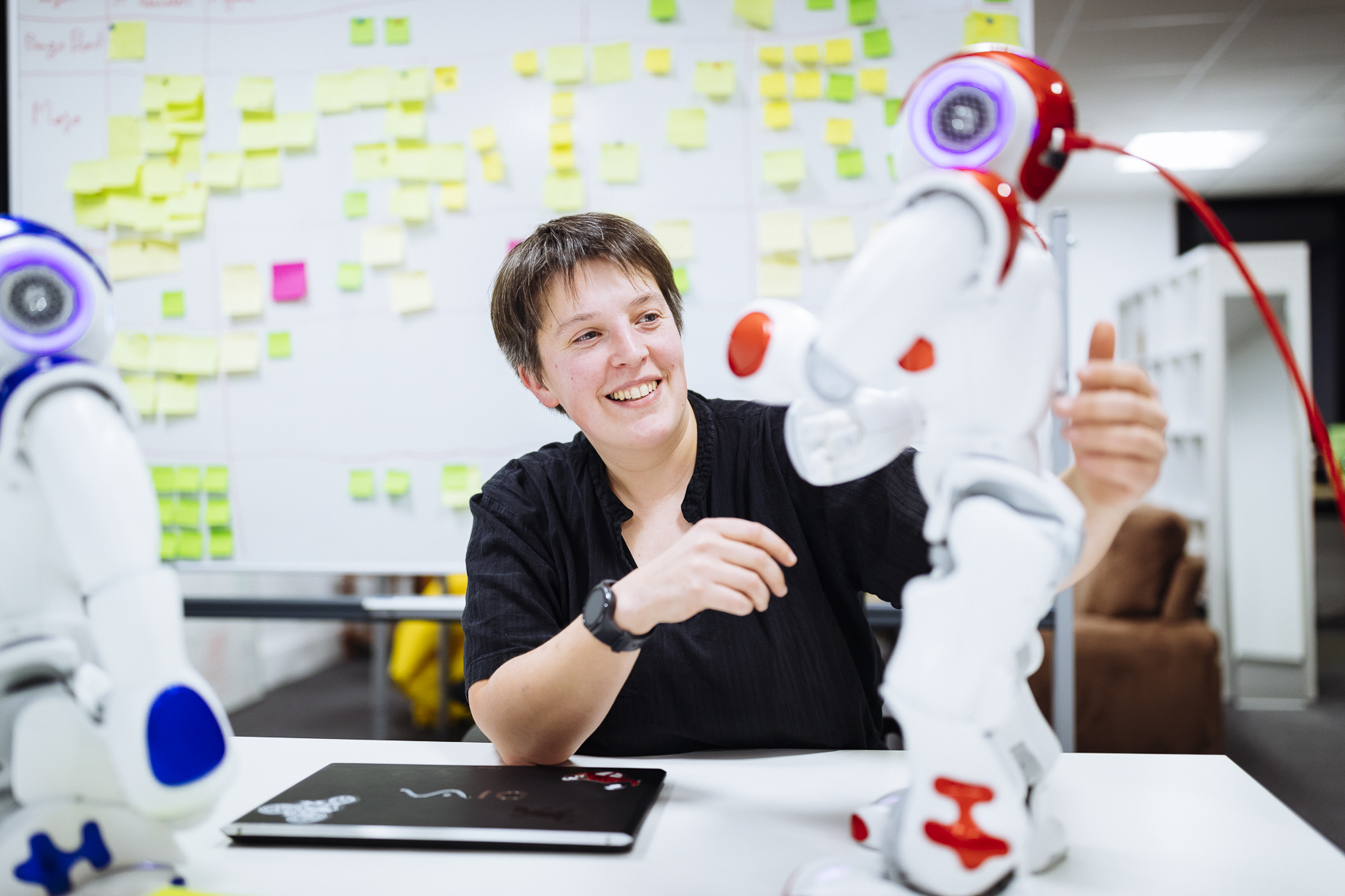
Cherchons pour Voir, des solutions interactives et inclusives au service des déficiences visuelles
Laboratoire commun (LCR). Partenaires : IRIT / CESDV Institut des jeunes aveugles
Le laboratoire commun Cherchons pour Voir se situe à l’interface entre le monde professionnel de la déficience visuelle et celui de la recherche. Il vise notamment à développer des technologies d’assistance pour améliorer l’autonomie et la qualité de vie des personnes non voyantes et malvoyantes. Les projets se consacrent, entre autres, à l’élaboration de cartes interactives d’aide à la localisation, des dispositifs numériques pour faciliter l’accès à l’information, l’éducation ou encore la culture.
Sites internet des partenaires :
- Institut de Recherche en Informatique de Toulouse (IRIT - CNRS/Université Toulouse 3 Paul Sabatier/INP Toulouse)
- Centre d’éducation spécialisée pour déficients visuels (CESDV Institut des jeunes aveugles)
Cybermallix, des solutions de cybersécurité prédictive pour la lutte contre les malwares et les virus
Laboratoire commun (LCR). Partenaires : LORIA / Wallix
L’objectif du laboratoire commun Cybermallix est de concevoir des méthodes et de développer des outils pour faire face aux attaques par code malveillant et de détecter les intrusions, et les attaques par déni de service (DDO). Les méthodes scientifiques impliquées sont les méthodes formelles, la rétro-ingénierie et l'IA. Les scientifiques du LORIA effectueront également, en commun avec les ingénieurs de WALLIX, des travaux de recherche sur la cybersécurité, afin d’explorer les questions de sécurité des objets connectés, en particulier des véhicules autonomes. Ils renforceront également la surveillance et la détection des codes malveillants, notamment grâce à l’utilisation des outils d’apprentissage automatique de l’intelligence artificielle.
Site internet des partenaires :
- Laboratoire lorrain de recherche en informatique et ses applications (Loria - CNRS/Inria/Université de Lorraine)
- Wallix
Dynamograde « la force de la marche », des robots à pattes (bipèdes et quadrupèdes) autonomes
LabCom ANR. Partenaires : LAAS-CNRS / Toward
Le laboratoire commun Dynamograde a vocation à devenir un centre de référence pour la prochaine génération de robots humanoïdes dont le robot Atlas de Boston Dynamics est le premier modèle visible.
Il a pour objectif principal de mettre en place une solution complète pour la locomotion artificielle de robots bipède et quadrupède, en s’appuyant sur la richesse des expérience commune du Laboratoire d’Analyse et d’Architecture des Systèmes (LAAS-CNRS) et Toward. L'idée est de développer de nouvelles manières de contrôler des robots marcheurs, comme le robot Talos, premier robot humanoïde de taille réelle asservi en couple disponible commercialement.
Sites internet des partenaires :
- Laboratoire d’Analyse et d’Architecture des Systèmes (LAAS-CNRS)
- Toward
FiT, lutter contre la criminalité financière
Joint laboratory. Partners: LIP6 / Bleckwen
Over the last years, financial crime became a very expensive plague slowing down the advent of the digital society. In 2019, the cost of financial crime was estimated at 1.45 trillions dollards.
Within this context, fighting against frauds, identity theft, or money laundering is a major issue. This fight relies on the analysis of massive sequences of financial transactions aiming at detecting traces of illegal activities such that proper counter measures can be undertaken. Nonetheless, advances in this fight are hindered by a ruthless lack of methods and tools to model and analyze the transactions in a suitable way.
The FiT labcom's primary objective is to lead the scientific and technological advances required to significant progresses in anomaly detection in financial transactions.
Bleckwen and the team ComplexNetworks wish to join their expertise to model and analyze financial transactions as link streams (see image below). They are currently developping and implementing the formalisms and algorithms enabling the proper exploitation of these data.
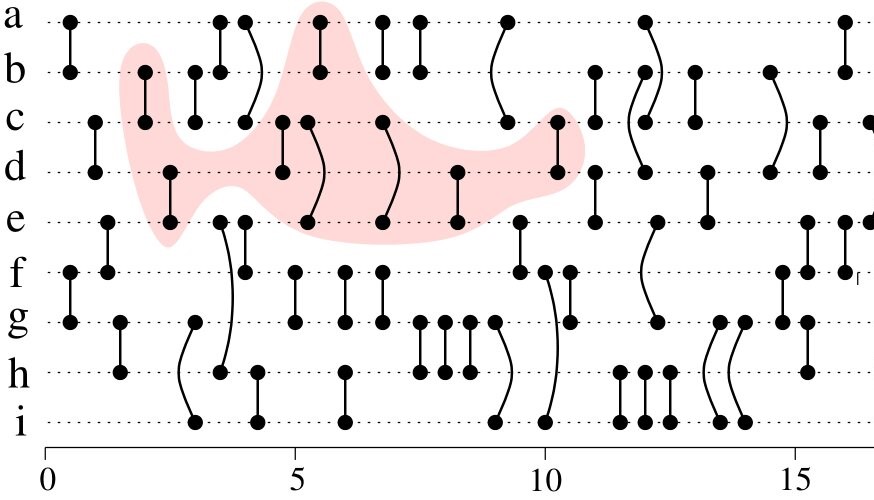
ICI-lab, Intelligence artificielle embarquée et capsules ingérables Lab
LabCom ANR. Partenaires : LIP6 / BodyCAP
La société BodyCAP et le laboratoire le Laboratoire LIP6 (CNRS/Sorbonne Université) ont mené, entre autres partenariats, une collaboration de recherche portant sur le développement d’une vidéocapsule destinée à la prévention du cancer colorectal. Afin de pérenniser leur collaboration dans un cadre plus structurant, les deux partenaires décident de s’appuyer sur leurs travaux communs et sur les développements de BodyCAP relatifs à une première génération de capsules électroniques ingérables destinées à la mesure de température par voie gastro-intestinale. Cette vision commune se traduit par la création du LabCom ANR ICI-lab qui a un double objectif :
- Mettre en œuvre un programme de recherche utilisant l’intelligence artificielle pour le traitement automatique de l’image visant la détection et la caractérisation de polypes,
- Intégrer de nouveaux capteurs (gaz, pH, microbiote) au sein de la vidéocapsule afin de caractériser l’environnement exploré, en l’occurrence l’intestin.
En s'appuyant sur ICI-lab, BodyCAP et le LIP6 ambitionnent de proposer une rupture technologique en intégrant de l’intelligence artificielle au sein de vidéocapsules endoscopiques pour détecter automatiquement des marqueurs de pathologies.
Image4US : une imagerie de pointe pour la recherche clinique
Labcom ANR. Partenaires : CREATIS / DBSAS
Bien que l’imagerie par ultrasons 2D soit largement répandue à travers le monde, l’échographie 3D peine, quant à elle, à fournir des images de qualité à haute cadence. Le laboratoire commun Image4US s’est ainsi donné pour objectif de développer un dispositif d’imagerie médicale ultrasonore 3D de précision et à grand nombre de voies (1024). Le système proposé se distingue par ses caractères ouvert, flexible et transportable À terme, un tel outil se destinera à accompagner les chercheurs dans le cadre de recherches cliniques pour une meilleure identification des structures anatomiques ou encore une estimation plus précise du flux sanguin.
Sites web des partenaires :
- Centre de Recherche en Acquisition et Traitement d'Images pour la Santé (CREATIS - CNRS/Inserm/Université Claude Bernard Lyon 1/INSA Lyon)
- D.B. SAS
PosiLab, Precision Parallel Positioners and Redundancy
ANR LabCom. Partners: LIRMM / Symétrie
The PosiLab LabCom aims to demonstrate the potential of redundant parallel positioner robots for precise positioning applications which are demanding in terms of performance (high rigidity, large workspace, high stability) in the fields of optics and space. The LabCom works in a tense economic and industrial context with a high level of competition and where competitiveness is vital. This LabCom brings together researchers and engineers from the Laboratory of Computer Science, Robotics and Microelectronics of Montpellier (a University of Montpellier/CNRS joint research unit) and Symétrie (an SME based in Nîmes). PosiLab has the ViaMéca competitiveness cluster label.
The PosiLab LabCom finds answers to the questions of "how to design optimally, then control robustly positioner robots capable of high precision (below micron and arcsecond) while (i) remaining insensitive to external disturbance and (ii) providing a large workspace." These are the identified requirements in the fields of optics, space, medical and microelectronics. The use of redundancy - or rather redundancies – will be implemented to achieve this.
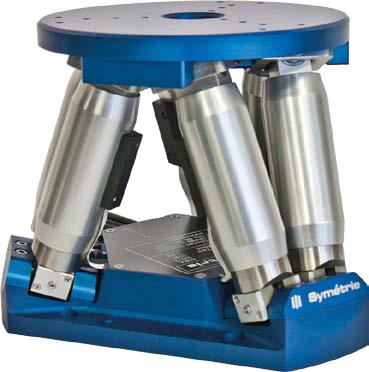
Redchain-Lab, la technologie blockchain pour un cloud solide, décentralisé et respectueux de la confidentialité
Joint laboratory. Partners: LIRIS / iExec Blockchain Tech
The RedChain-Lab joint laboratory project aims at developing protocols and operational blocks to set up a decentralized cloud infrastructure that offers scalability, resilience, trust and confidentiality properties. This infrastructure will be based on blockchain technology whose unique intrinsic properties of decentralization, robustness and transparency make it the most qualified technology to achieve functional objectives.
Partners' Websites :
- Laboratoire d'Informatique en Images et Systèmes d'Information (LIRIS - CNRS/INSA de Lyon/Université Claude Bernard Lyon 1)
- iExec Blockchain Tech
Rob4Fam, Robots For the Future of Aircraft Manufacturing
Joint laboratory. Partners: LAAS-CNRS / Airbus
One of Rob4Fam's (Robots For the Future of Aircraft Manufacturing) scientific challenges is to provide robots with the capacity to be reactive or, in other words, to ensure they can detect a change in their work environment and make a real-time decision to adapt to it. For example, a "reactive" robot needs to stop if it perceives a human operator intervening and then resume its task taking into account any modifications made by that operator.
Rob4Fam is also working on a project to develop technologies that can be adapted to different generations of robots.
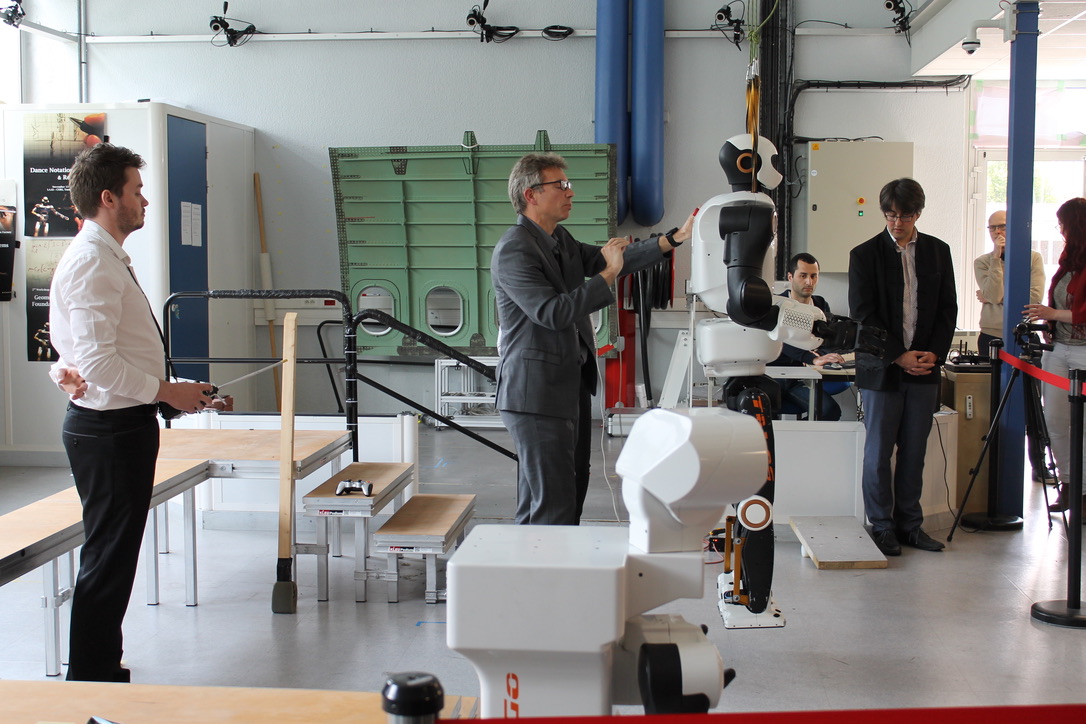
SIBIL-Lab, des solutions logicielles pour contrer les fraudes dans le B2B
Labcom ANR. Partenaires : LIRIS / Attestation Légale (OFA)
Le SIBIL-Lab s’attaque à la problématique de la gestion de l'identité numérique et à la détection des tentatives de fraudes. Le labcom développe des solutions dans le cadre du réseau social B2B créé par l’entreprise Attestation Légale qui permet de gérer des relations clients/fournisseurs interentreprises. L’objectif : soutenir la mise en place d’une plateforme capable de dimensionner, détecter et contrer les tentatives de fraude et ainsi assurer la sécurité et confidentialité de données sensibles des acteurs économiques.
Sites web des partenaires :
- Laboratoire d'Informatique en Images et Systèmes d'Information (LIRIS - CNRS/INSA de Lyon/Université Claude Bernard Lyon 1)
- Attestation Légale (OFA)
SIVALab, perception and localization systems for autonomous vehicles
Joint laboratory. Partners: Heudiasyc / Renault
Renault and the Heuristics and Diagnostics For Complex Systems Laboratory (Heudiasyc - CNRS/ University of Technology of Compiègne) have set up a new joint research laboratory called SIVALab (Integrated systems for Autonomous Vehicles Laboratory) which will be based in Compiègne.
This scientific and technological partnership is the fruit of a relationship of trust between Renault and Heudiasyc that has lasted over ten years. The SIVALab laboratory has shared governance and resources and provides a structure adapted to the sustainability of scientific developments and the implementation of large-scale projects. It is working on a four-year research programme.
This collaboration project's main focus is on the reliability, integrity and accuracy of perception and localization systems used for the navigation of autonomous communicating vehicles. The data analysed comes from the vehicle's sensors, pre-established navigation maps and from the exterior, via dynamic links to other road users and infrastructure. Thanks to an intelligent management of the combination of this data from multiple sources, the vehicle has a greater capacity to locate itself in its environment than it could alone with its sensors.
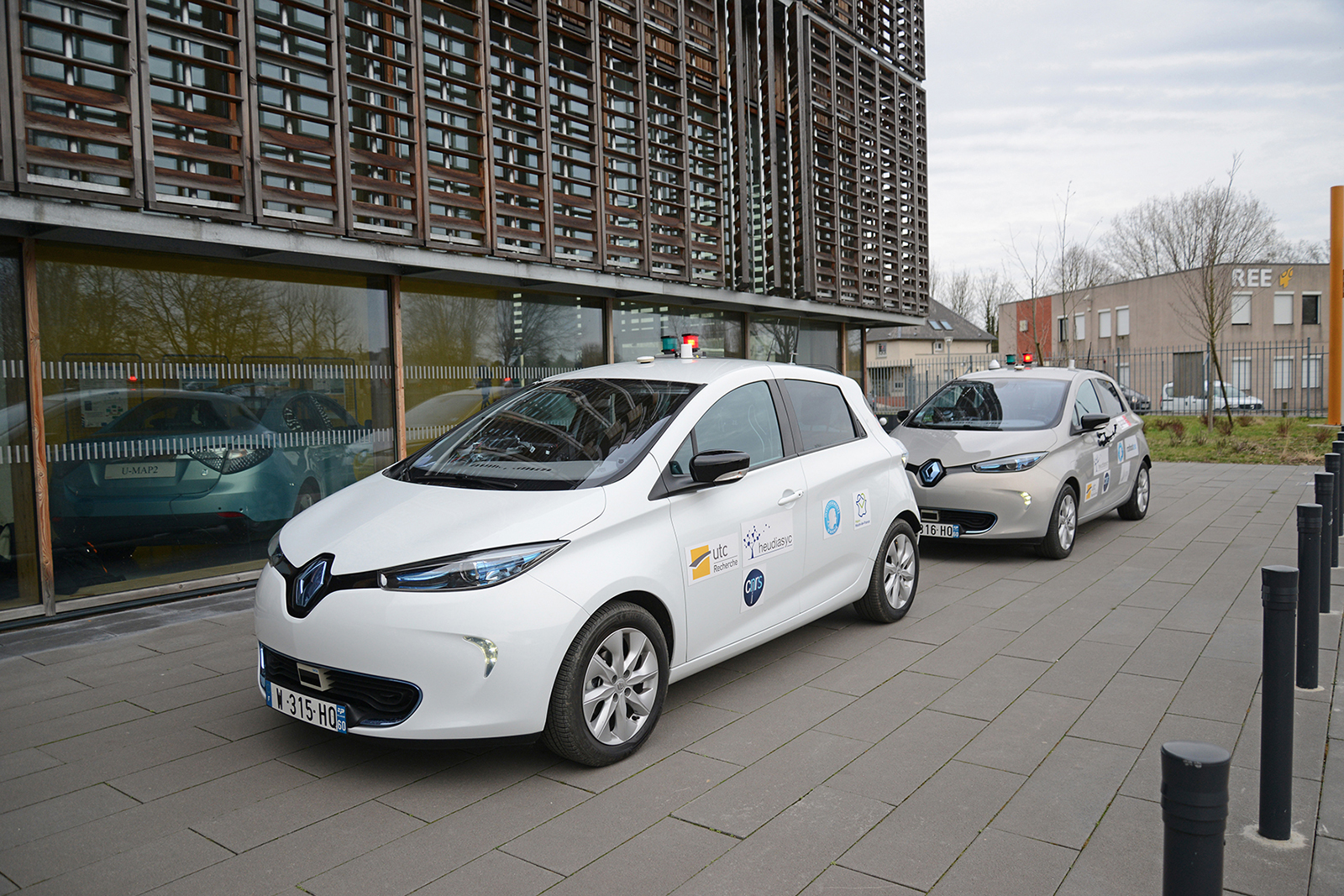
SurferLab, Distributed Intelligence for Transportation Systems Laboratory
Joint laboratory. Partners: LAMIH / Bombardier Transport / Prosyst
SurferLab is built around a core theme involving embedding artificial intelligence based processing capabilities in complex mobile systems (trains, cars, planes, trucks, AGVs, etc.) to implement and optimize various control, monitoring and diagnosis (health monitoring) functions.
SurferLab is a joint research laboratory formed of Bombardier Transport, Prosyst and the Laboratory of Industrial and Human Automation control, Mechanical engineering and Computer Science (LAMIH – CNRS/ Université Polytechnique Hauts-de-France. LAMIH is renowned for its work on transport and security, mobility and disability.
SurferLab's aim is to make these systems more intelligent, more autonomous, and capable of adapting to the unexpected. These systems are immersed in a fleet interacting with a control or maintenance centre and a human operator. This is a cyber-physical type (CPS) approach and in principle concerns all modes of transport.
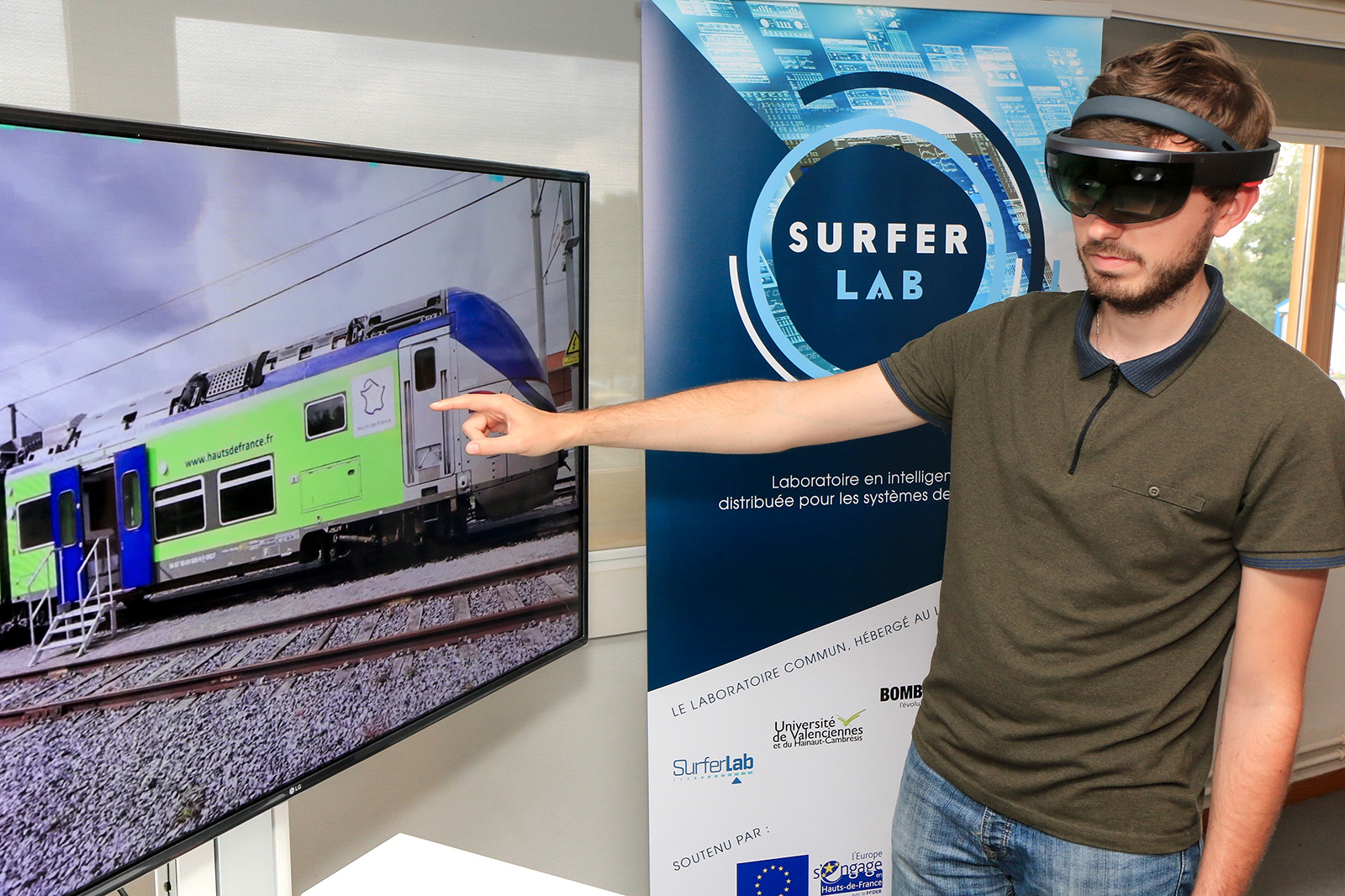
TechnoFUS Lab, des dispositifs de thérapies ultrasonores guidés par imagerie
LabCom ANR. Partenaires : ICube / Image Guided Therapy (IGT)
Les thérapies par ultrasons focalisés (FUS, focused ultrasound, ou HIFU pour High Intensity Focused ultrasound) ont émergé dans les années 2000 comme de nouvelles thérapies non-invasives reposant sur l’interaction physique entre l’onde ultrasonore de haute intensité et le tissu à traiter. Selon son mode d’utilisation, l’énergie ultrasonore permet par exemple de brûler une tumeur cancéreuse en profondeur, ou bien de perméabiliser certaines barrières physiologiques afin de faciliter la délivrance localisée de médicaments. Ces méthodes ont évidemment un potentiel thérapeutique considérable, de par leur caractère non-invasif et non-ionisant. Malgré ce potentiel unique, elles reposent sur de nombreuses briques technologiques majeures. Leur efficacité et leur sûreté ne peuvent être garanties que si les étapes de planification préopératoire, de ciblage et de suivi en temps réel sont proprement traitées, chacune représentant un réel défi technologique.
Le LabCom TechnoFUS s’appuie sur l’expertise du laboratoire ICube dans les domaines de la robotique, de l’imagerie interventionnelle, et plus généralement, des gestes médico-chirurgicaux assistés par ordinateur, et celle de la société Image Guided Therapy dans le domaine des dispositifs ultrasonores et des thérapies guidées par l’image. L’objectif est, à terme, de lever les verrous technologiques majeurs liés à ces thérapies et de les rendre plus performantes et plus accessibles.
Sites web des partenaires :
- Laboratoire des sciences de l’Ingénieur, de l’Informatique et de l’Imagerie (ICube - CNRS/Université de Strasbourg)
- Image Guided Therapy (IGT)
Telecom4Health (T4H), des technologies et solutions dédiées à la santé
Laboratoire commun (LCR). Partenaires : LIG / Orange
L’objectif du laboratoire commun T4H est de mener des travaux de recherche autour de l’intelligence artificielle et des nouvelles technologies appliquées à la médecine dite “4 P” : prédictive, préventive, personnalisée et participative. Les activités du labcom portent sur la gestion de consentement grâce à l’apport de la blockchain ; les sons santé afin d’atteindre des transmissions médicales de haute qualité ; le suivi à distance et l’IA raisonnée.
Sites internet des partenaires :
- Laboratoire d’Informatique de Grenoble (LIG, CNRS/Université Grenoble Alpes)
- Orange